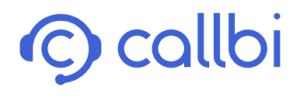Quality assurance (QA) has always been the bedrock of excellence in contact centres, ensuring that customer interactions meet predefined standards of service quality.
Traditionally, measuring QA posed numerous challenges for contact centre managers, leading to inconsistencies, limited insights, and missed opportunities for improvement. However, the introduction of speech analytics has ushered in a paradigm shift in how QA is measured.
In this blog, we will be letting you in on the secret to boosting your ROI… Forget the tedious traditional ways of measuring QA and unlock the power of speech analytics.
The Traditional Approach to QA
Two words: manual and time-consuming. The traditional approach to QA involved manual evaluation of agent-customer interactions, following these steps:
- Subjectivity: QA evaluations were highly subjective, with human evaluators making judgement calls on the quality of interactions. This subjectivity introduced inconsistencies and bias.
- Limited Insights: The manual nature of evaluation provided only a limited view of QA performance. Evaluators had to focus on specific interactions, making it challenging to gain comprehensive insights.
- Reactive Feedback: QA feedback was often delivered reactively, after interactions had already occurred. This reactive approach made it difficult to address issues promptly and proactively.
Pain points of traditional QA
Contact centre managers have long grappled with several challenges when it comes to measuring QA using traditional methods.
- Inconsistent Quality Assessments: Traditional QA measurement methods often resulted in inconsistent quality assessments due to the subjective nature of evaluations. Different evaluators might interpret the same interaction differently, leading to unreliable data. Think of a restaurant where waiters are evaluated by different managers for their service quality. One manager might focus on the friendliness of the waiter, while another might emphasize the accuracy of the order. Due to their different preferences, one waiter could receive a high score from one manager and a low score from another, leading to inconsistent evaluations. This subjectivity in assessment demonstrates the challenge of relying on traditional methods, as the same interaction can be judged differently, making it hard to ensure consistent service quality.
- Limited Data Sample: Traditional methods typically relied on a limited sample of interactions, which might not accurately represent the entirety of customer interactions. This limited sample could lead to skewed assessments. An example of this is a customer service hotline at a busy toy store. Traditional methods involve checking only a handful of calls made on Mondays. However, this limited sample might not include calls made on weekends, which could be different because more families shop during weekends. Relying on this small selection might misrepresent the overall customer experience, leading to inaccurate judgments about service quality.
- Missed Opportunities for Improvement: The limitations of traditional QA measurement meant that valuable opportunities for process improvement and enhanced customer experiences were frequently overlooked. Managers struggled to identify patterns and trends that could lead to operational enhancements. Imagine a fast-food restaurant using traditional QA methods to evaluate customer service. They might randomly assess a few drive-thru orders per week, focusing on specific items like burgers and fries. However, this limited approach might overlook other key aspects, such as customer service during busy hours or the accuracy of special requests. Without a comprehensive analysis, the restaurant’s management might not notice a trend: during peak times, customer satisfaction drops due to longer wait times. Without identifying this pattern, they miss the chance to improve staff allocation or streamline processes, leading to missed opportunities for enhanced customer experiences and operational efficiency
- Resource Inefficiencies: Without precise insights into the quality of interactions, contact centres often allocated resources inefficiently. Overtraining or underutilization of agents was common, leading to cost inefficiencies. Without precise insights into the quality of interactions, contact centres often allocated resources inefficiently. Overtraining or underutilization of agents was common, leading to cost inefficiencies.
The Benefits of Using Speech Analytics
Speech analytics technology has completely revolutionised the measurement of QA in contact centres in the following ways:
-
- Automated Evaluation: Speech analytics automates the evaluation of customer interactions, capturing and processing vast amounts of data in real-time. It can objectively assess the quality of interactions based on predefined criteria.
- Objective Scoring: Speech analytics relies on objective criteria, eliminating the subjectivity associated with traditional methods. It evaluates interactions consistently and provides reliable metrics.
- Comprehensive Insights: By analysing speech patterns, keywords, sentiment, and other data points, speech analytics offers comprehensive insights into the quality of customer-agent interactions. It can detect trends and issues that might have gone unnoticed using traditional methods.
- Real-time Feedback: Speech analytics provides real-time feedback, allowing contact centre managers to identify and address quality issues as they occur. This proactive approach enables continuous improvement and enhances service quality.
Final thoughts
The transition from traditional QA measurement methods to speech analytics represents a monumental leap forward for contact centres. Speech analytics offers contact centre managers a more objective, comprehensive, and proactive approach to measuring QA, effectively addressing the pain points associated with manual evaluations. With speech analytics, contact centres can enhance service quality, agent performance, and customer satisfaction, ultimately achieving their goals more effectively in the competitive landscape of customer service. The future of QA measurement is data-driven, responsive, and customer-centric, thanks to the power of speech analytics.
As the contact centre landscape continues to evolve, the adoption of speech analytics is poised to play a pivotal role in creating data-driven, responsive, and customer-centric customer service operations. If you want to learn more about how Callbi Speech Analytics can help your contact centre achieve 100% call coverage and insights, please contact us for more information or a demo.

